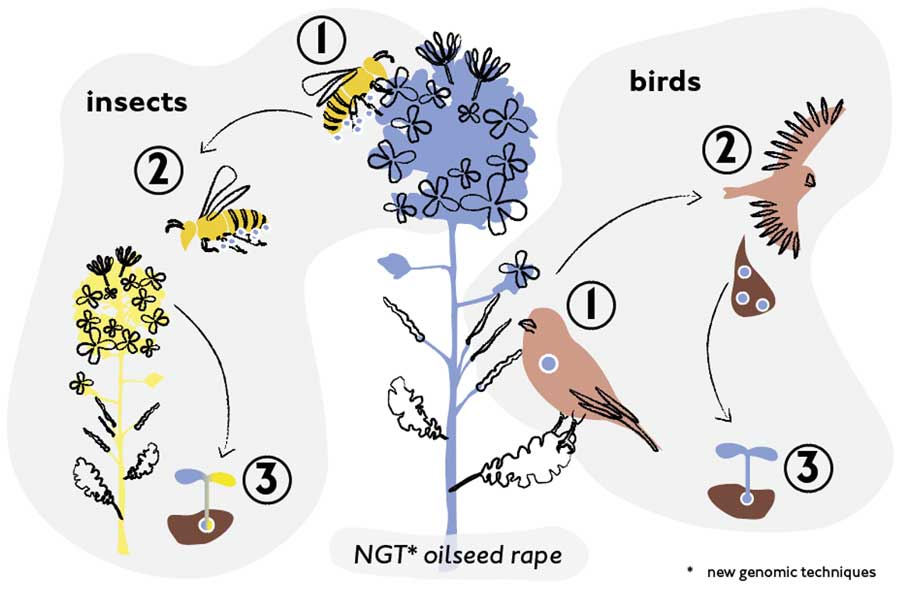
Oilseed rape plants, which are native to Europe, are a favoured source of food for various animals.
(left) Pollinators, such as bees, use oilseed rape flowers as a source of nectar and pollen. (1) When visiting the flowers, pollen from the NGT oilseed rape sticks to the bees. (2) The bees fly to the next flower, and thereby spread the pollen, including to neighbouring fields where conventional oilseed rape is growing. (3) This allows conventional oilseed rape to be pollinated with pollen from NGT oilseed rape. The result is oilseed rape kernels and plants with mixed genetic material (half conventional/half NGT).
(right) Oilseed rape kernels are a food source for birds, such as finches. (1) Some of the NGT oilseed rape kernels will pass undamaged through the digestive system. (2) The birds fly away and the NGT oilseed rape kernels may fall to the ground outside the field. (3) NGT oilseed rape kernels can germinate somewhere in nature and grow into an NGT oilseed rape plant. Here they may also cross with other NGT oilseed rape plants or other related species. It is almost impossible to control the dispersal of NGT oilseed rape once NGT plants are cultivated.
References and further informations:
Factsheet: “The application of NGTs in Brassicaceae“
